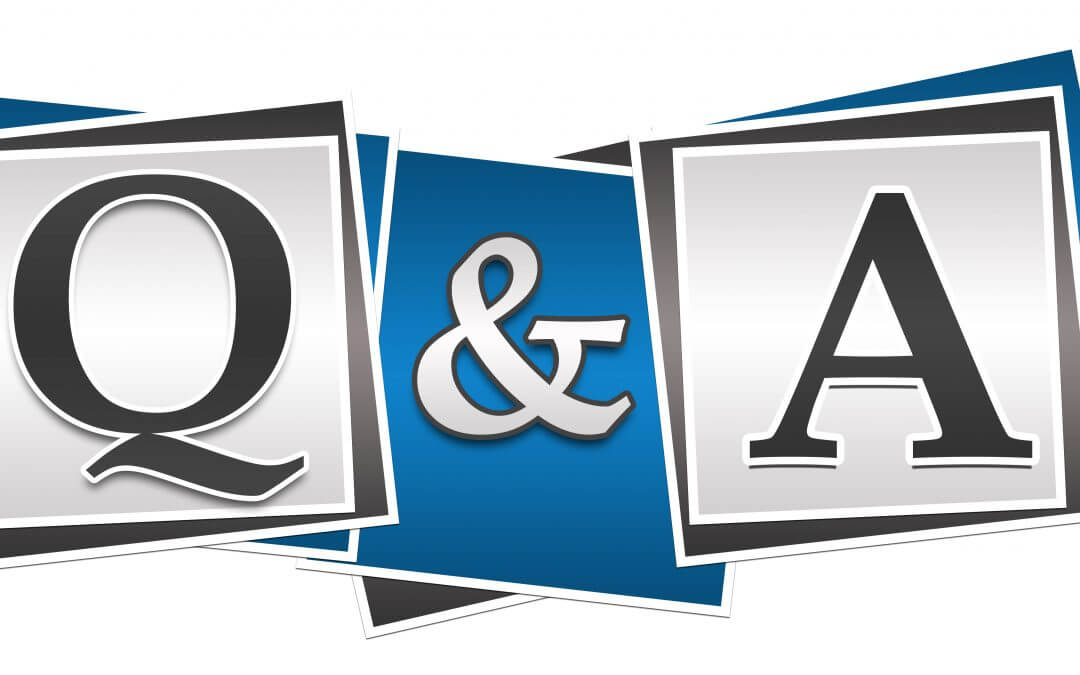Handling Questions During a Presentation
Handling questions can be the downfall of many presenters, even if their presentation is spot on. At most any conference you go to, the breakout sessions follow a predictable pattern. The room host gets up and calls everyone to order. They read the rules of the road, asking attendees to turn off their cell phones and keep their conversations to a minimum. Then they read (yuck) a sterile bio about the presenter and give a hearty welcome (sarcasm implied) to “our presenter”. It’s a weak opening, but it’s not the worst part of the conference system.
The greater error in meetings, conferences, and presentations is to end weakly with questions. Handling questions can be tough. Poor presenters will set it up with (I’ve heard this countless times, and cringe every time), “Well, that’s all I’ve got for my presentation. Are there any questions?”
One of two outcomes usually happens when you ask “Are there any questions?”:
- Crickets. The audience, some of whom have been napping comfortably for the past fifteen or more minutes, are slow to awaken and process their questions. Even if there were questions, the long pause while the audience figures out how and what to ask gets the best of even a seasoned presenter. “Don’t everyone speak at once.” “Was I that good, you don’t have any questions?” Or worse, “Well, good, I’m glad that everything is clear.” (so you’re happy we don’t have any questions?!) No one likes the silence, and it’s a bad way to end.
- The dominant heckler. Usually sitting in the front row, there is often a person who seems compelled to share how much he knows or to attack the presenter and find a weakness. He asks question after question, rarely letting another questioner into the fray, and the Q&A devolves into a conversation (argument?) between the presenter and our front-row showoff. Often, people in the back begin to disperse, until finally the room monitor steps in when time is up and the room begins to fill for the next presentation. I’ve seen many a sheepish presenter get ambushed by such participants and meekly leave the stage embarrassed and feeling like they did poorly (when the presentation may have been great).
Regardless of which path the presentation takes, it ends on a downward note, with people trickling out and the opportunity for buzz and continued energy missed. Because people are more likely to remember a great ending, it’s imperative for the presenter to provide great content until the final bell. I do not believe that allowing the audience control is the ending that works best.
Here are three tips for handling Q&A that will make your presentations and meetings more powerful and give the audience a better experience.
3 Tips for Handling Questions
- Ask better questions. Instead of “Are there any questions?” (to which the answer is either yes or no!), try, “What questions do you have?” Or set it up with “This is a complex topic that generates lots of thought and questions…”
- Seed questions. You can do this on the sly, but giving a printed question to an audience member and asking them to ask it if there is silence is perfectly OK in my mind. Or you can ask a trusted friend to be that plant. A more genuine approach is to say, “I’m sure there are lots of questions. I’ll ask the first one. It’s one I get asked a lot…” Make sure your answer is very short, then let the audience chime in.
- Don’t save Q&A to the end. I know most conferences almost demand this technique, but I think there’s a better way, and I’m willing to stand against the conference mandate to drop Q&A in the middle and promise more content after we’re done. An even more novel concept is to take questions at any time. This is my favorite, because that’s when the audience has their questions and it gives instant feedback and the opportunity to be flexible. But it takes an advanced level of presenter skill, you can’t be tied to a sequential set of slides, and it does have risks. Either way, this allows the speaker to end strong with a specific and powerful call to action, not a degenerative slide into the abyss of bad audience participation.
Bonus Tip:
Promise a golden nugget or important summary before you enter into questions and the audience will want to stay through Q&A until the end. End with Q&A, and your shy, content, or cynical attendees will check out mentally, if not physically. It’s too great a cost to leave in the hands of your audience.
My experience says… don’t end with questions.
Communication matters, what are you saying?
Related Post: 5 Quick Tips for Answering Questions
Corporate Training Session Available: Great Answers to Tough Questions Workshop



